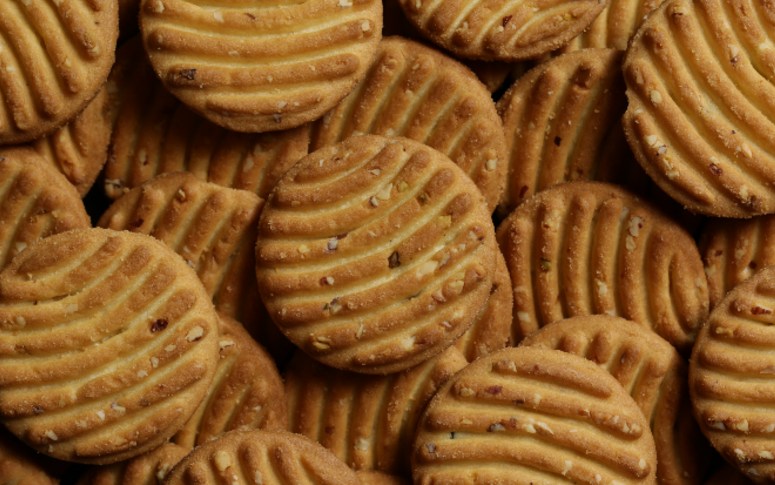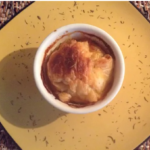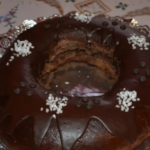It has ever happened to you that, after baking a cake, you get a cracked cake. If you want the dessert for your own or family consumption, perhaps it does not matter so much because the flavor will be the same; however, if you plan to give it away, share it with guests, use it for a celebration or sell it, things change.
In this sense, a cake with cracks is very unattractive and not very functional, since it could break or crumble when removed from the mound.
To avoid this, it is first important to know why the cake opens. For this reason, we share with you everything you need to know about the faults that explain why the cake cracks and its possible solutions.
Oven temperature is too high
Controlling the temperature is an essential element if you want to obtain a uniform cake without cracks. In general, it can be neither too high nor too low. In many cases, the amount of ingredients has been correct and the cake mixture is well done, but the baking temperature has not been correct and has damaged the cake.
Too much heat can cause the yeast to rise too quickly, which will take time away from the crumb formation and thus lead to cracks. Also, by cooking so quickly, there is a risk that it will burn on the outside and be raw on the inside, giving it a fragile structure that can easily break or crack. The oven temperature for the biscuits is ideally 170-180ºC.
If you wonder how to make the cake not rise in the middle and not open, then the following tips will be very useful:
- Cook at a lower temperature for a longer time. If your oven is very powerful, do not bake at the same temperature indicated in the recipe, do it at a lower temperature and extend the cooking time. If you know your oven well, you will know how long to give it, if not, we recommend you do some previous tests.
- Use an oven thermometer. This device will help you a lot, since you will know what temperature your oven really reaches.
- Know your oven. First of all, you need to experiment with your oven. Try different recipes, take notes and keep practicing. Trial and error will prevent you from future unexpected surprises while cooking.
Excessive baking time
Another reason why the cake opens in the oven could be overbanking. If you overcook a cake, four things can happen: it can crack, crack, dry out, or burn. In these cases, the cake loses moisture due to prolonged exposure to heat. For this reason, make sure you take it out just in time, not before or after.
The only exception to this rule arises from the differences that exist between home ovens, as some will need more time to bake because they do not heat enough. Ideally, the cake will not take more than 40-45 minutes to be ready, so take advantage of the last few minutes to check if it is still raw or if you can already remove it.
Keep in mind that if you live in a very cold place, you can leave the cake in the oven for 5 more minutes to avoid a sudden change in temperature that lowers it. If you do, turn off the oven, open the door and let the heat gradually escape.
If what happens to you is that, just after taking it out of the oven, the cake loses volume,
Too much chemical yeast or baking powder
In confectionery, nothing should be left over and nothing should be missing. Otherwise, we will obtain a different result than expected (although not always bad). In the case of this ingredient, more yeast does not mean you will get a fluffier and higher cake, but it could cause it to fall apart.
An excess of chemical yeast will release a lot of CO2 in a short period of time. As a consequence, the cake will rise very quickly and collapse. This is usually the cause that explains why the cake sinks in the middle or cracks.
Be sure to use the measure of yeast called for in the recipe, or consider changing your recipe if you’ve already followed it to the letter. For cakes that use around 200 to 250 g of flour, a teaspoon of chemical yeast will suffice.
Tip: If you don’t sift the baking powder and incorporate it unevenly, it can also crack the cake.
The mold is very small
Another essential point to obtain a good cake is to use a mold of adequate size. If the pan is too small, the batter will overflow during baking and therefore the end product will be a cake that is sunken in the center or cracked on the surface.
When choosing the ideal mold, think that the dough should cover 2/3 of it. Nor should it cover less than that, as it is one of the reasons why the cake does not rise. The perfect balance is appropriate, as you guarantee a good result and an aesthetically pleasing cake.
Excess flour or dry ingredients
If the dough contains more flour than it should or has too many dry ingredients, the mixture will become unbalanced, thus losing its moisture. Consequently, the cake will dry out and open, showing cracks.
To correct this problem, change the recipe or measure the ingredients very well (use proper utensils to do this). If you have substituted ingredients, added cocoa powder or other dry ingredients that were not in the original recipe, make sure the measurements compensate for the absence of the original ingredient or the excess dry ingredients.
Tip: More dry ingredients than liquids also cause the cake to not rise or get cake.
Bake many cakes at once
Perhaps you put several cupcakes in the oven simultaneously without leaving any space between them. If the pans touch each other, the cakes may bake unevenly and crack.
Solution? Leave enough space between them, at least 2 centimeters between each mold, so the heat will circulate evenly.



